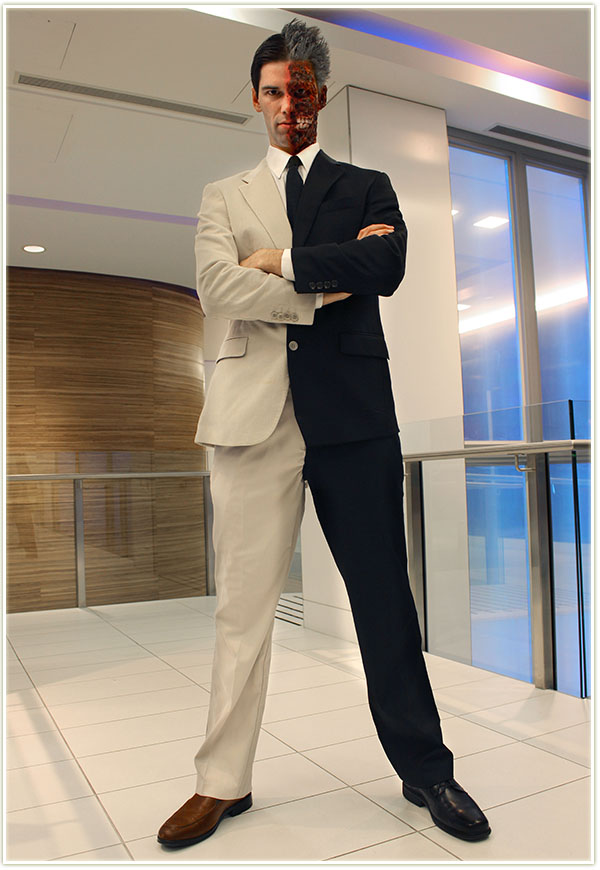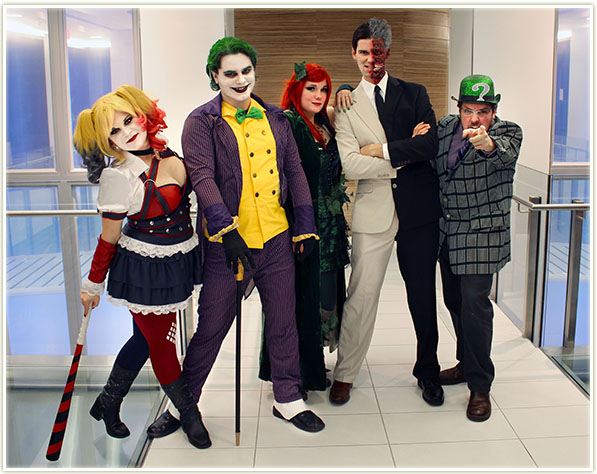
We’ve reached the end folks! The last Halloween 2015 roundup is for Harvey Dent/Two Face!


The most striking thing about Shawn’s get up was definitely his face. While I didn’t do the makeup (our friend Steve did – he was Batman in our group costume), I can link you to the video where an amazing YouTuber came up with some great techniques for it!

One of the key pieces for the makeup was incorporating clear fake fingernails by cutting them down to the shape of teeth! For this, KISS clear fake nails were used. I couldn’t believe just how realistic they looked when applied to the face.

Here’s a brief time lapse video of the application process:
https://www.youtube.com/watch?v=iOLNld7LkHQ
In Shawn’s own words: “The process of applying the make-up was actually less time consuming than I thought it would be – Steve worked remarkably quickly given the significant layering required to achieve the final look.
The significant amount of liquid latex applied to my face and neck was surprisingly comfortable; to be honest, it felt like a second skin and I barely noticed it throughout the evening. The edges of the prosthetic started to peel up a few hours after the initial application, especially around the mouth, but we were able to re-secure it with some eyelash glue.
At the end of the evening, the latex peeled off very easily and there was only a small amount of make-up left on my face to remove with make-up remover. All in all it was a very smooth and painless process from start to finish.”

The one piece I did have a hand in was creating the actual Two Face outfit. Shawn bought two suits that somehow miraculously lined up pretty well, including the button holes! Unfortunately, I’m not much of a seamstress and I haven’t a clue how to operate a sewing machine. We ripped the two sides of the pants apart, as well as the jacket, and I sewed them back up together by hand. We salvaged the zipper from one of the pants and were able to use that to help keep the pants up (with a touch of Velcro to lock it in place). All in all, I think the outfit turned out surprisingly good!





And with that, we’re done for Halloween 2015! If you’re interested in the other costumes I posted about, you can find them here: | Harley Quinn | The Joker | Poison Ivy |
That makeup for Too Face was so creepy and well done! I can’t believe how realistic the KISS nails look!
Jodi recently posted…Hairball Control & Avoiding Feline Urinary Tract Infections with Hill’s #PetSmartLovesCats | AD
I know right?!?! He was definitely stopped a lot more than we were because the makeup was so incredible!
The face turned out so cool!
I’m looking forward for Miss M to get older and start doing more elaborate costumes – both on her and myself!
Chantal recently posted…Shopping on RoseGal.com
Do you have any kind of ideas on what you want to do? Joint costumes?
I’d love to do a family theme at least once. 🙂
Chantal recently posted…FabFitFun: Winter 2015 Spoilers